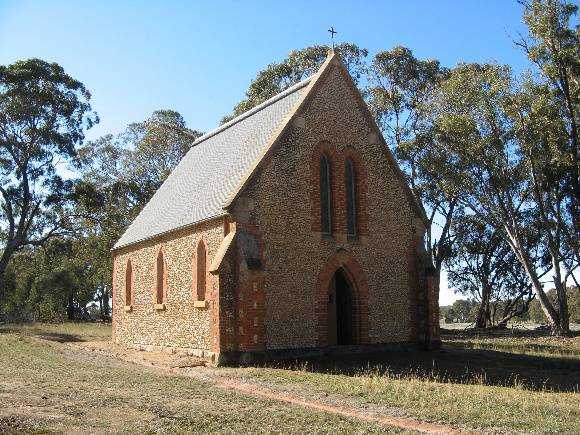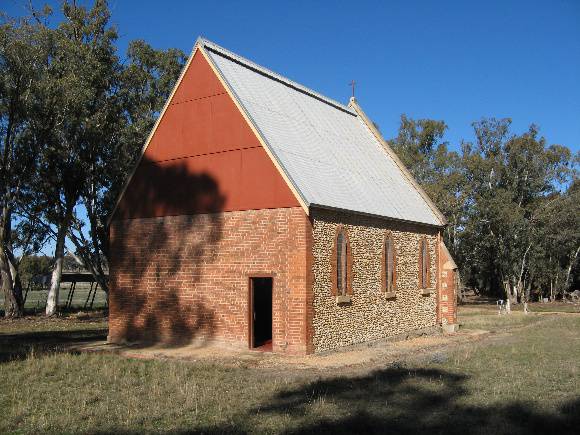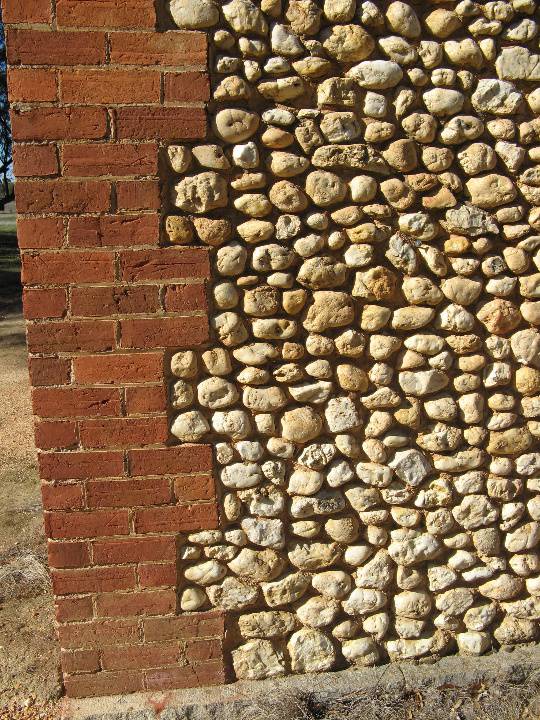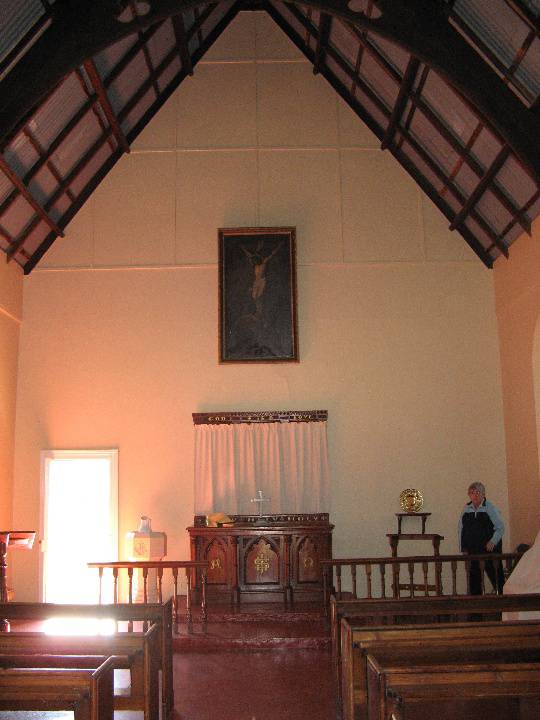| Back to search results » | Back to search page » |
|
ST PETERS ANGLICAN CHURCH
Other NameThe Pebble Church Location367 DUNOLLY ROAD CARAPOOEE, NORTHERN GRAMPIANS SHIRE
File Number600766LevelRegistered |
|
Statement of Significance
What is significant? St Peter's Anglican Church at Carapooee, known locally as the Pebble Church, was built in 1869-70 to a design by the prominent Melbourne architect Leonard Terry, then the diocesan architect for the Anglican Church. The contractors were Phil Crone and Henry Edwards of St Arnaud. The local men assisted with the construction, gathering the white quartzite cobbles from the hill opposite and carrying them across to the site. The plans made provision for a chancel and a tower with a belfry at the east end, which were never completed. The church opened for worship on Sunday 10 July 1870, before the interior had been completed, and with borrowed seating placed directly on the ground inside the shell of the building. The final cost of construction was only ₤710.4.5 but would have been much higher without the use of voluntary labour and the stone gathered near the site. The English oil painting above the altar was passed on to the church by the Rev Wm Dalton, vicar of St Arnaud 1904-10. Carapooee was a prosperous gold-mining village in the nineteenth century, but by 1924 the local businesses had all closed and the church had become an important community gathering point. By 1965 services were held only once a month and are now only once a year. The church is well maintained by the local community, St Peter's Anglican Church is a simple Gothic style church on a large rural site, surrounded by an open grassed area with large gum trees. The church has walls of random-coursed rounded water-worn white quartzite cobbles set in a pinkish mortar. The walls rest on a granite base, the quoins, the Gothic arched door and window surrounds and corner buttresses are of red brick, and the roof is of corrugated iron. The rear wall of the church, where the chancel and tower were planned to be, is of red brick. Open brick spoon drains surround the building. Internally the walls are plastered and painted white. There is no ceiling and the roof iron is visible above the timber roof framing. The timber floor has been replaced with concrete. There is a simple stone font, a timber altar and altar rails, and early timber pews. Two marble memorial plaques commemorate local men killed in WWI in France and Gallipoli. How is it significant? St Peter's Church at Carapooee is of architectural and historical significance to the State of Victoria. Why is it significant? St Peter's Church Anglican Church is of architectural significance as an unusual example in Victoria of the use of English vernacular building materials and techniques. Vernacular traditions were made fashionable in the nineteenth century by the interest in the Picturesque aesthetic and by the Arts and Crafts movement. The church has walls of cobbles, which were a common vernacular building material in parts of England, especially for more humble buildings, as they could be collected locally, thus avoiding the high costs of transportation. It is also an interesting example of a simple rural Gothic church designed by the prominent Melbourne architect, then the Anglican Diocesan architect, Leonard Terry. St Peter's Church is of historical significance as a reminder of the English origins of the population, and hence of English building techniques, in Victoria in the nineteenth century. The now isolated church building is a reminder of the many small gold mining towns established in Victoria in the nineteenth century, many of which have now virtually disappeared, with only the major public buildings, which were constructed of more permanent materials, now remaining. The church has historical associations with the settlement of the district, is an important part of the surrounding landscape and is a local landmark.
Group
Religion
Category
Church








